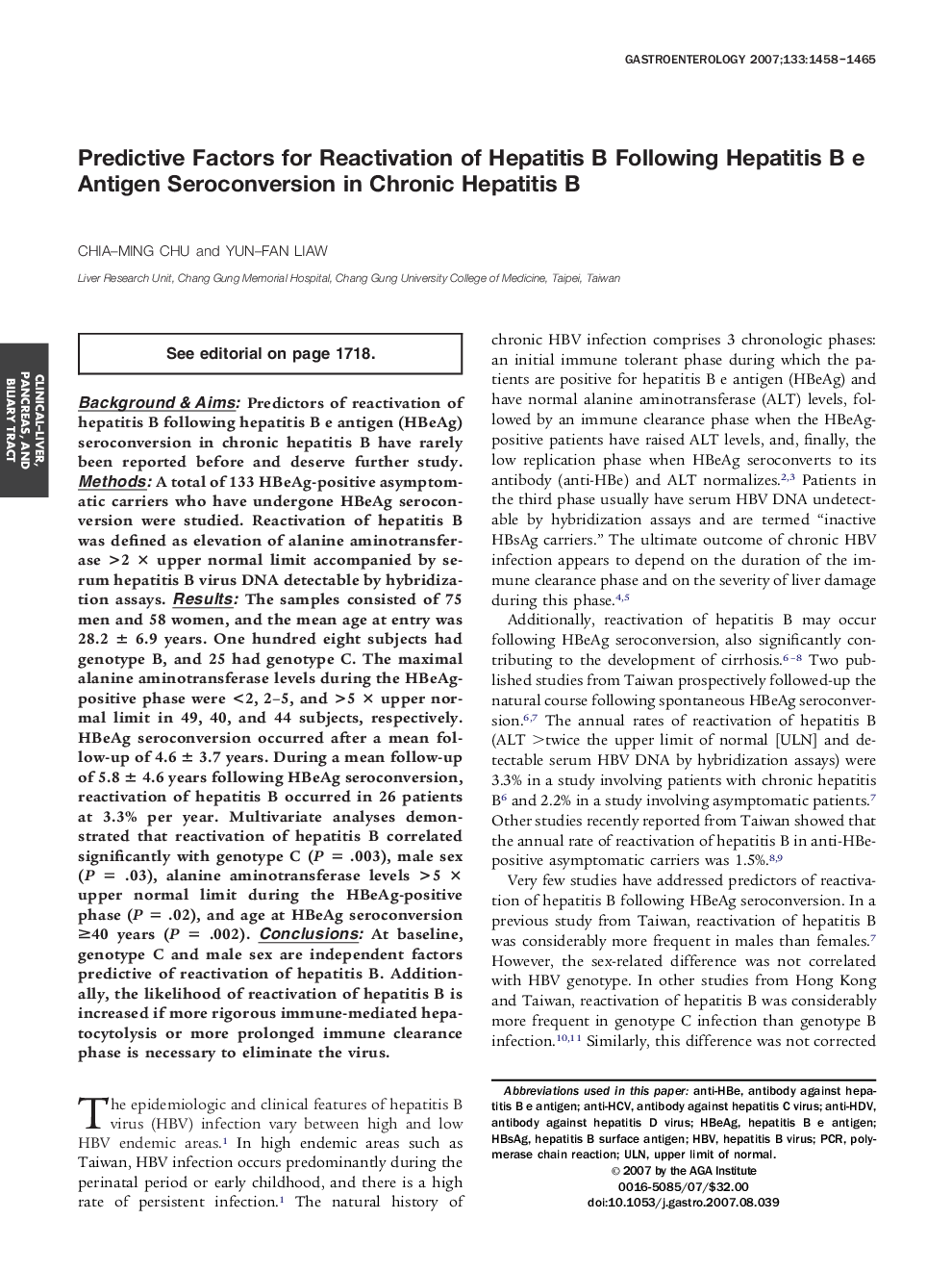| کد مقاله | کد نشریه | سال انتشار | مقاله انگلیسی | نسخه تمام متن |
|---|---|---|---|---|
| 3295997 | 1209863 | 2007 | 8 صفحه PDF | دانلود رایگان |

Background & Aims: Predictors of reactivation of hepatitis B following hepatitis B e antigen (HBeAg) seroconversion in chronic hepatitis B have rarely been reported before and deserve further study. Methods: A total of 133 HBeAg-positive asymptomatic carriers who have undergone HBeAg seroconversion were studied. Reactivation of hepatitis B was defined as elevation of alanine aminotransferase >2 × upper normal limit accompanied by serum hepatitis B virus DNA detectable by hybridization assays. Results: The samples consisted of 75 men and 58 women, and the mean age at entry was 28.2 ± 6.9 years. One hundred eight subjects had genotype B, and 25 had genotype C. The maximal alanine aminotransferase levels during the HBeAg-positive phase were <2, 2–5, and >5 × upper normal limit in 49, 40, and 44 subjects, respectively. HBeAg seroconversion occurred after a mean follow-up of 4.6 ± 3.7 years. During a mean follow-up of 5.8 ± 4.6 years following HBeAg seroconversion, reactivation of hepatitis B occurred in 26 patients at 3.3% per year. Multivariate analyses demonstrated that reactivation of hepatitis B correlated significantly with genotype C (P = .003), male sex (P = .03), alanine aminotransferase levels >5 × upper normal limit during the HBeAg-positive phase (P = .02), and age at HBeAg seroconversion ≥40 years (P = .002). Conclusions: At baseline, genotype C and male sex are independent factors predictive of reactivation of hepatitis B. Additionally, the likelihood of reactivation of hepatitis B is increased if more rigorous immune-mediated hepatocytolysis or more prolonged immune clearance phase is necessary to eliminate the virus.
Journal: Gastroenterology - Volume 133, Issue 5, November 2007, Pages 1458–1465